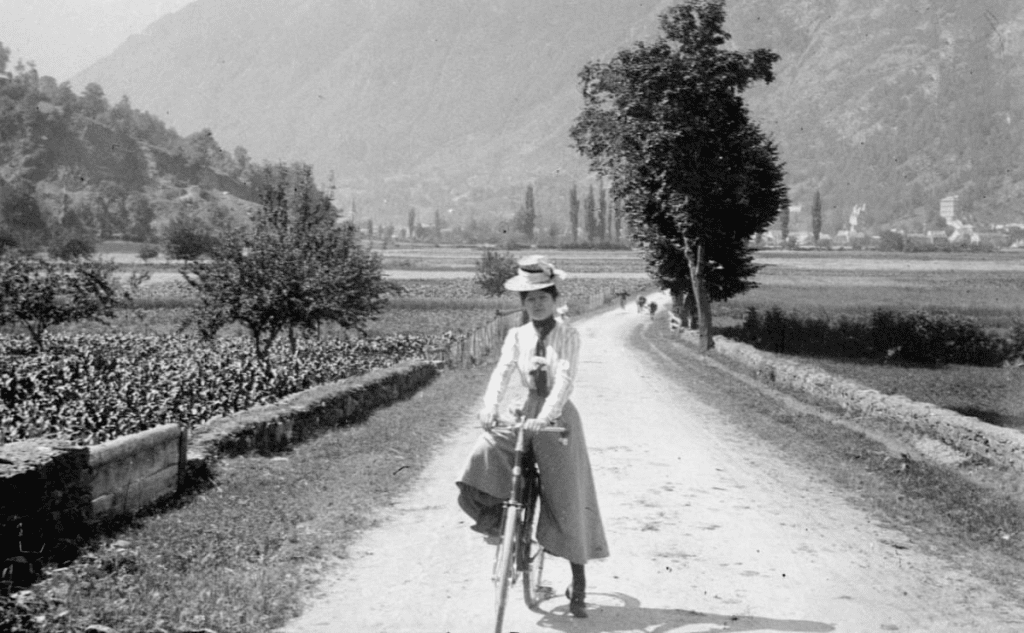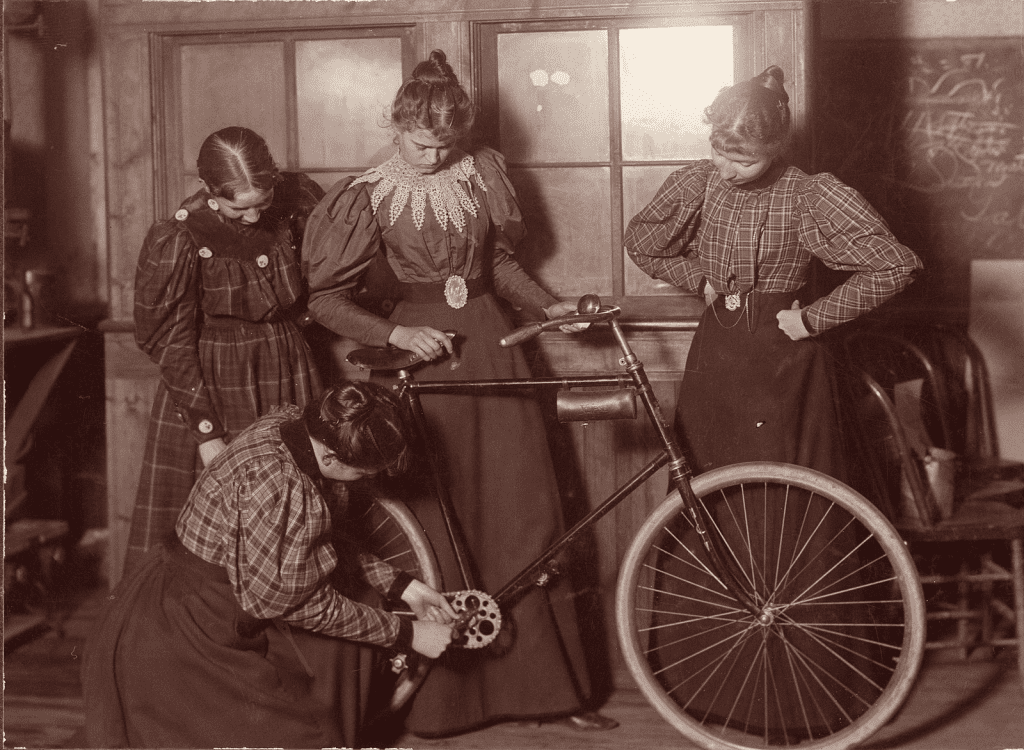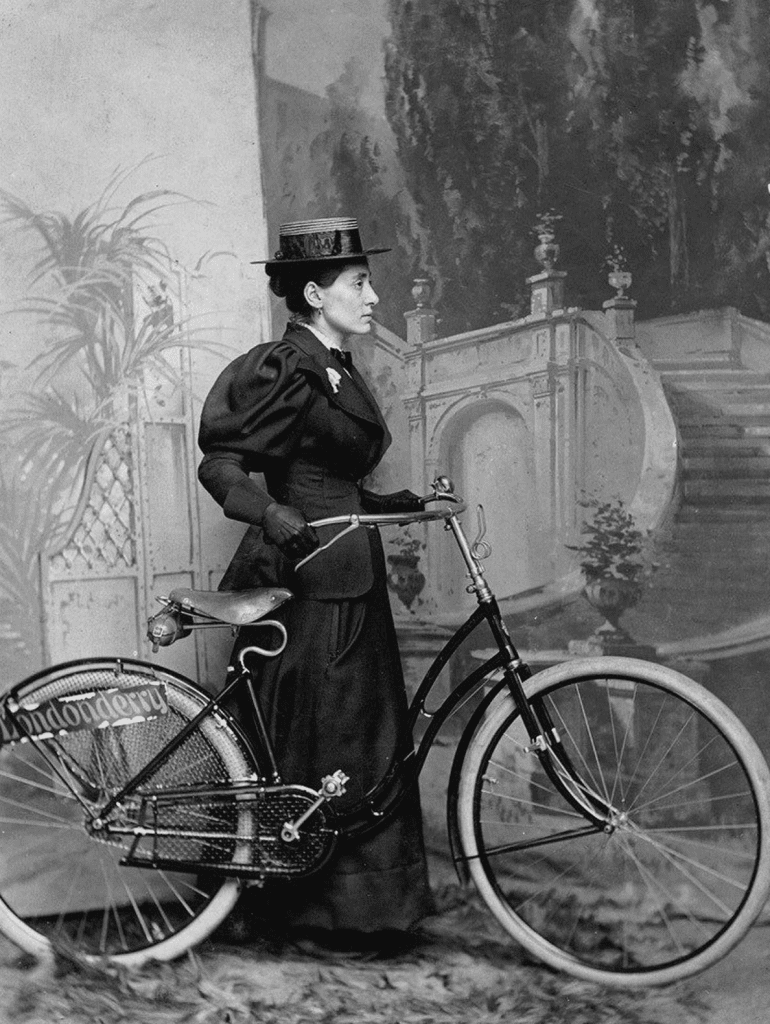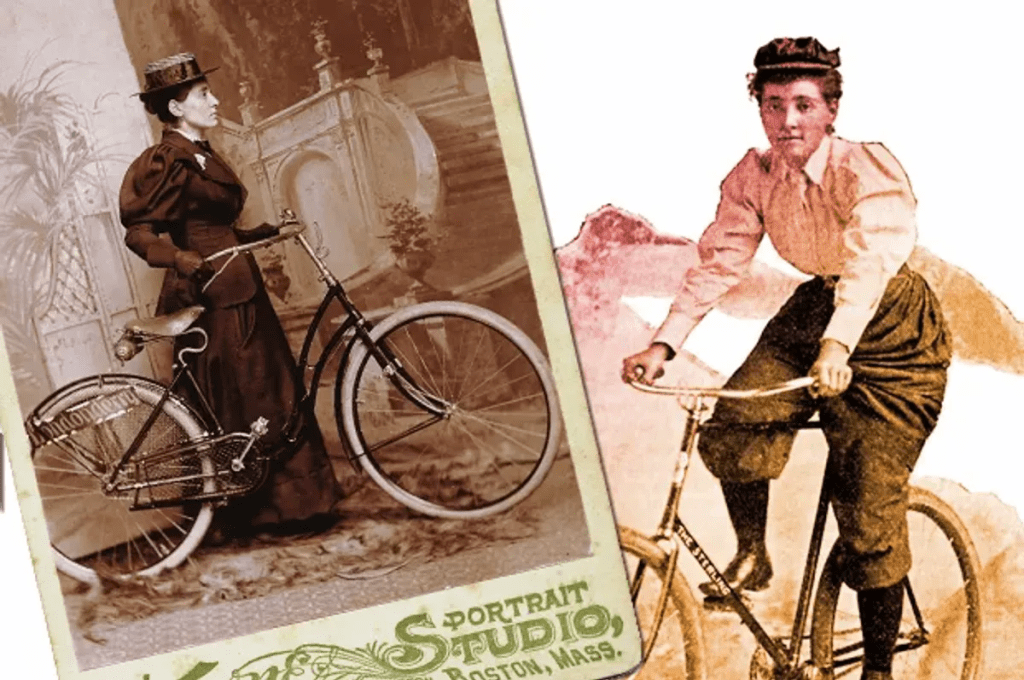In the summer of 1894, a young mother of three stood at the edge of Boston with a bicycle and a bold goal. Annie Cohen Kopchovsky, who adopted the name “Annie Londonderry” for her journey, had accepted a curious challenge: to circle the globe by bicycle in just 15 months and prove that women could be as physically and mentally capable as men.
What began as a publicity stunt quickly turned into one of the most remarkable journeys of the 19th century.

The Woman Behind the Wheel
Annie was no typical adventurer. She was a Latvian Jewish immigrant, just 24 years old, and living in Boston with her husband and children. She had never cycled before this journey and didn’t come from a background of exploration or sports.
But she had something even more important: grit, courage, and a clever sense of marketing.

Why the Name “Londonderry”?
Annie understood branding long before it was common. To fund her trip, she secured a sponsorship from the Londonderry Lithia Spring Water Company. In exchange for $100, she agreed to carry the company’s banner and even change her last name to Londonderry for the duration of the trip.
This was one of the earliest examples of personal brand sponsorship in history.
Video:
The Woman who Cycled the Globe | Annie Londonderry
Cycling Across Continents with a Purpose
Annie began her ride in June 1894 with a 42-pound bicycle, wearing a long skirt typical of the era. As she rode, she realized practicality mattered more than propriety, and soon switched to bloomers and a lighter bike. Her route took her first through the northeastern United States, then across the Atlantic to France.
From there, Annie cycled through Europe, the Middle East, and Asia, often relying on trains or boats to cross impassable or dangerous terrain. Still, she pedaled thousands of miles and endured physical hardships, political tensions, and social resistance.

An Unstoppable Storyteller and Survivor
Annie was not only an athlete but a born storyteller. Along the way, she gave lectures and wrote newspaper articles describing her adventures. While some of her tales were undoubtedly embellished, they captured the public’s imagination.
She spoke of escaping bandits in France, surviving a collision with a runaway horse and cart, and navigating floods in India. Whether every word was true or not, she knew how to keep audiences engaged and draw attention to her journey.

Challenging Gender Expectations in the 19th Century
At a time when women were expected to stay home, raise children, and never travel unchaperoned, Annie shattered social norms. She faced harsh criticism from those who believed she had abandoned her family and challenged the notion of femininity.
Video:
Birth Of The Bike (1937)
But her mission was bigger than the bike. She was proving that women could be independent, adventurous, and commercially savvy. She represented a new kind of woman modern, brave, and self-made.
Return to Boston and Her Lasting Legacy
Annie returned to Boston in September 1895, completing her trip just inside the 15-month window. She declared, “I am a journalist and a new woman,” cementing her place in history.
After the ride, Annie moved to New York, continued writing under the pen name “The New Woman,” and faded from the spotlight. She died in 1947, largely forgotten, but her legacy has been rediscovered by historians and feminists alike.

Why Her Story Still Inspires Today
Annie Londonderry’s ride was more than a journey around the world. It was a challenge to the limits society placed on women. In an era where even voting was off-limits for women, Annie’s globe-spanning ride was an act of defiance and vision.
Her story resonates today as we still battle outdated gender roles and fight for equality in sport, media, and public life. Annie proved over a century ago that resilience and creativity could take a woman far literally across the world.

Conclusion
Annie Londonderry wasn’t just a cyclist. She was a symbol of change, determination, and courage. Her two-wheeled adventure across continents rewrote the rules of what women could do in the public eye.
She didn’t just win a bet she made history.


